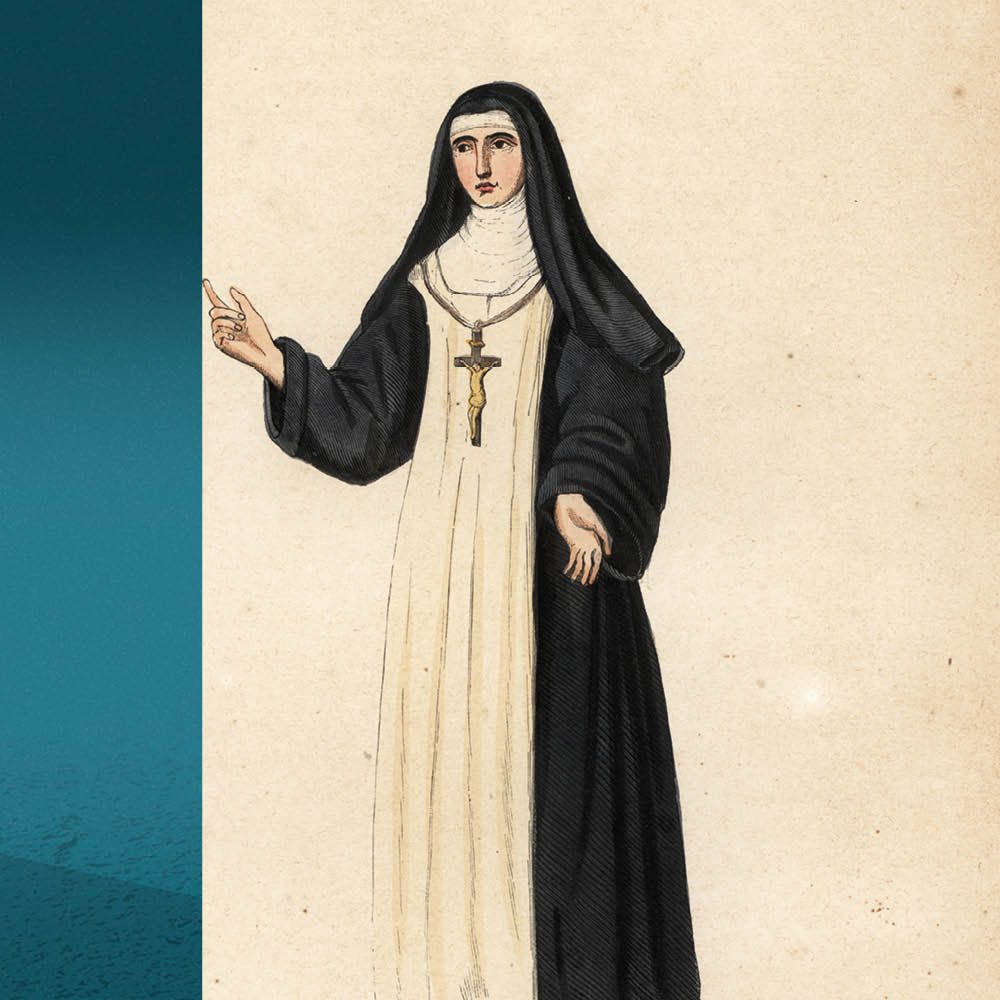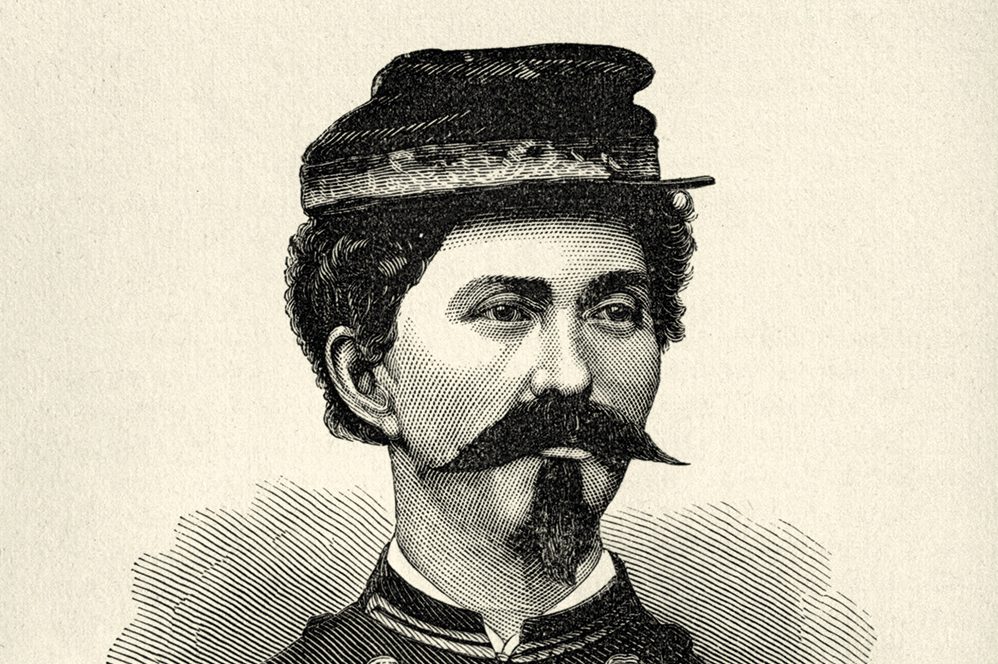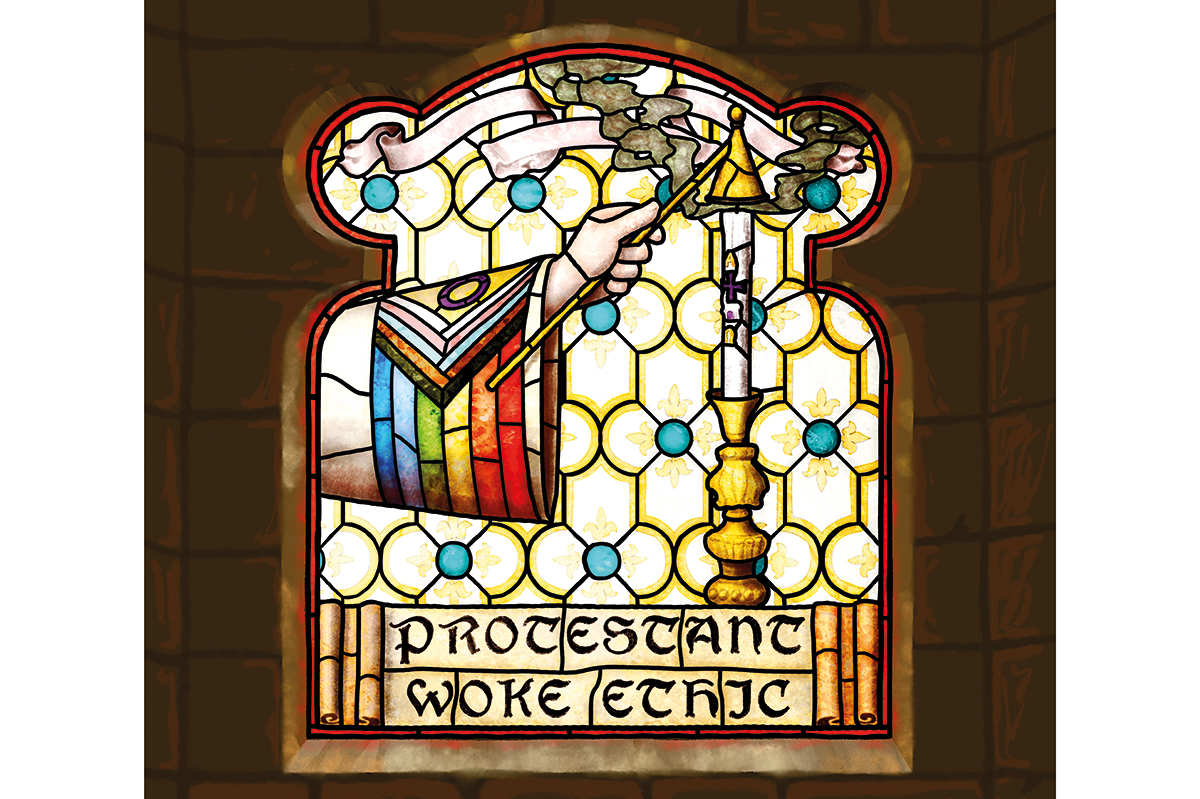Bishop Fulton J. Sheen, the immaculately Brylcreemed megastar of the golden age of Catholic television and radio evangelism in the United States, famously hated hearing the confessions of nuns. Doing so, Sheen is reported to have said, was “like being stoned to death with popcorn.”
Despite this, Sheen — at one point broadcasting to over 30 million Americans — found himself hearing a lot of nuns’ confessions in his later career. He was reduced to this, alongside what was rather euphemistically referred to as his “international cassette tape ministry,” having fallen foul of the archbishop of New York, the doughty Cardinal Spellman. Where Sheen was all matinée-idol looks and easy conversation, Spellman was a former baseball player who hated Greta Garbo and loved the Vietnam War. He once memorably asserted that Pope John XXIII was “no pope! He should be selling bananas.” (The Italians the cardinal encountered in New York were often greengrocers.) The clash of worlds was too much and so the urbane Sheen was made unwelcome in Manhattan and sent upstate to his diocese, there to be stoned to death with popcorn.
From Sheen to Ophelia, getting to a nunnery is a long-running trope for exile, for the willful removal of oneself from the ways of the world. It is no coincidence that nuns remain fascinating to us. Modernity has a sort of enforced cloisteredness to it: its anonymity, the return of asexual and celibate lives, the predominance of repetitive tasks. Why pray the rosary when you can click Microsoft Excel? Ours is a world where lives are lived in increasingly atomized form, and yet are more joined up than ever. Both in community and in solitude: exactly like that of a community under vows. Yet the West increasingly forgets that it was shaped by Christianity. In such a world the life of a cloistered nun — necessarily isolated and yet also part of the world’s largest institution — is both relatable and extremely weird.
That is perhaps why Catherine Coldstream’s eminently readable Cloistered seems so timely. She makes clear that her background was unusual for someone who became not just a nun, but an enclosed Carmelite nun in a cloistered community in the wilds of Northumberland. It is about as hardcore as Western Christianity of any flavor can get. Her father was a professor of fine art at the Slade school in London and she describes a childhood spent in that very particular lefthand corner of the British class system: a background of “public service and liberal social attitudes” as she calls it.
Through the evangelistic power of simple holy acts by religious people and while processing the death of her father, Coldstream found herself called to the life of a nun. Her time in the cloistered life was spent at Akenside nunnery in Northumberland, a place which she both fell in love with and found immensely difficult in the end. Her time in the convent totaled ten years; this time, from the first night in a monastic cell to her final departure from both the place and the life, forms the bulk of the narrative.
There is much about the rhythm of the cloister, the motivations for leading a religious life and the wider aspects of a particular type of Roman Catholic life which have been odd or alien to the vast majority in Britain since the Reformation. The monastic day, the habit, the hierarchy of the Church generally and a nunnery in particular are well explained in, well, layman’s terms.
However, as is invariably the case in contemporary religious writing, it is the little moments of the incongruously secu- lar that break through and provide some of the most memorable moments, as well as comic relief. From Black Magic chocolates emerging from beneath the habit of a senior nun to the bizarre scene when, in that limbo between the end of Christmas and the start of Lent, the Mother Superior commands that the nuns dance together, leading to a mass outbreak of the hokey-pokey while Northumbrian winds howl outside, there are moments of warmth and comedy even as the author paints the picture of a cold and forbidding physical and architectural world.
There are other, less comfortable ways in which the world, the flesh and the Devil break into the community. As Sheen deduced, there is much tension around the narcissism of small differences; to put it another way, when people spend a lot of time striving to be good, they can find exceptionally small and creative ways to be nasty. There are moments of shocking, petty cruelty, often involving the formation, as in any group or community, of cliques and subgroups. Even when they’re in silence, the nuns find ways to communicate, to denigrate, to poke fun and occasionally to exclude. The community might have been Cistercian but the image of human nature is more accurately Augustinian.
In Coldstream’s expertly crafted narrative, the cloister seems not so much a retreat from the world, but another world, where each act and sensation and feeling is more significant than it possibly could be outside. Reading it is almost like experiencing hypersensitivity. A small pot of tea, a knock on the door, a kitchen apron: all are described exquisitely and with the skill of a truly gifted writer. Their minute details come alive, as does their significance to the people who use or encounter them.
The care with which Coldstream notices is what makes her narrative so powerful and the book so beautiful to read. Tellingly, in her epilogue, she says that “the monastery held me, enamored, too long for the core of the experience to be fundamentally renounced.” Just as in those hours of contemplation or work or prayer, small things — teapots or crucifixes — become big or beautiful or dangerous, so do human emotions. It is because of this that the tension builds and builds. Ten years pass in the cloister and yet they feel both like a millennium and as yesterday.
Coldstream’s skill is as deftly applied to the humans — nuns and priests and monks remain humans — who make up the story as to the events or the details or the geography of the story. Indeed, the cloistered life exposes vulnerabilities and failings and good qualities that might remain under the bushel in a less rigorous environment. If life in the nunnery puts faith or objects under the microscope of hypersensitivity, it puts humans under it even more so. The trivial habits which might escape notice in a family or a friendship or even a marriage can be magnified to the point of discomfort. Perhaps Sheen was right about popcorn.
Yet Cloistered does not feel like being stoned at all. The presence of these women is profoundly edifying, in part because of their weaknesses. Their painful “flawed human reality” — which is eventually too much for Coldstream to bear — is laid out in a way which neither dissembles nor judges. The nuns themselves become types for humans more generally, and the flaws in our nature which are inherent. There is the ethereal, geriatric Julianna, the mischievous Suzi, the devout, distant Jennifer, the liberalizing, managerial Irene and then Elizabeth, the Mother Superior, who is flawed and messed up and blinkered but also capable of being “magnificent.” Fundamentally, as you might expect, this is a book which understands redemption. That is because above all else, there is the omnipresent character in the narrative: God in Christ.
It’s through her desire to see things — and, crucially, people — truly, in light of the love of God, that all the nastiness and difficulty and pain which Coldstream undoubtedly experienced lead to a good ending. She refuses to be bitter and Cloistered is all the more beautiful, and holy, as a result.
This article was originally published in The Spectator’s June 2024 World edition.























Leave a Reply